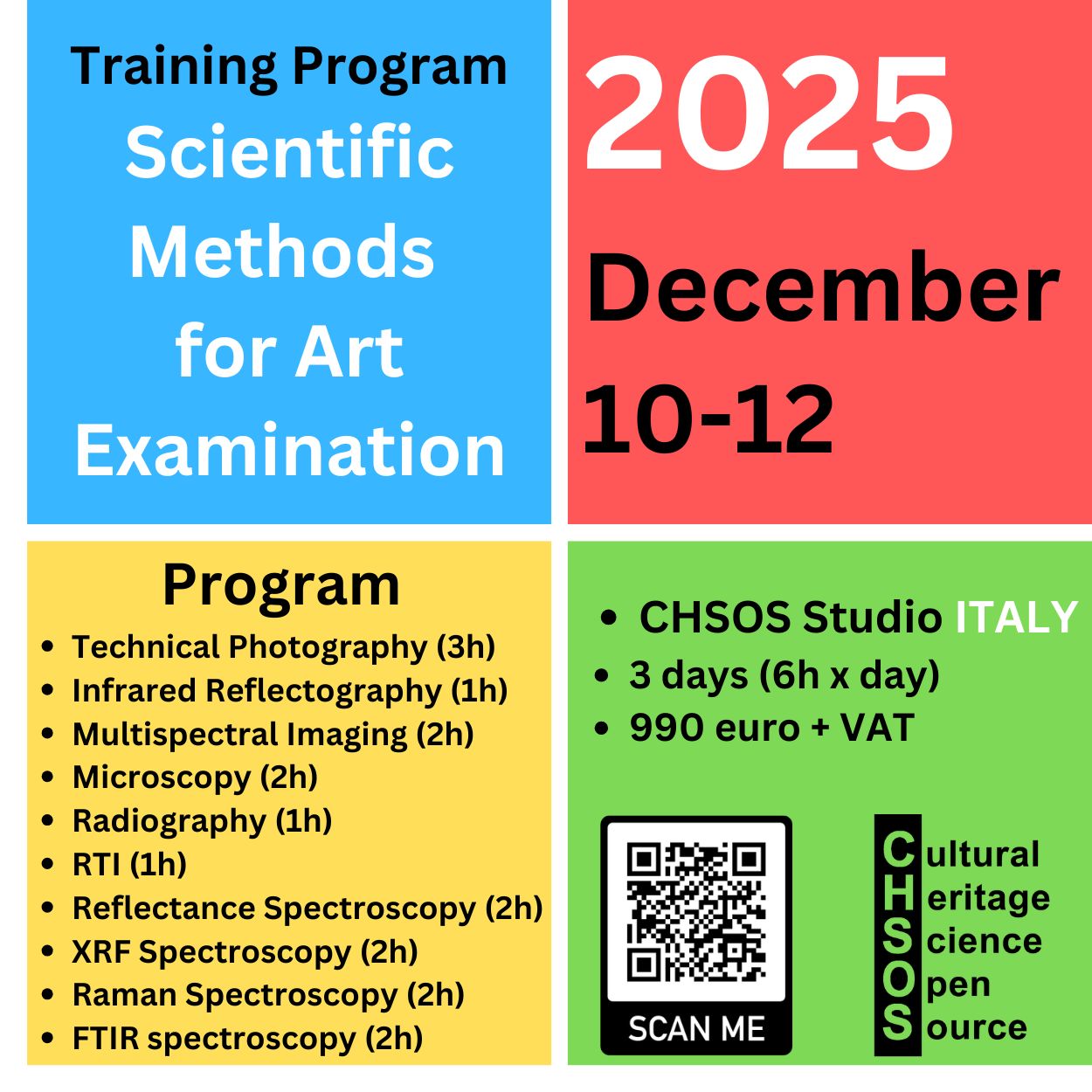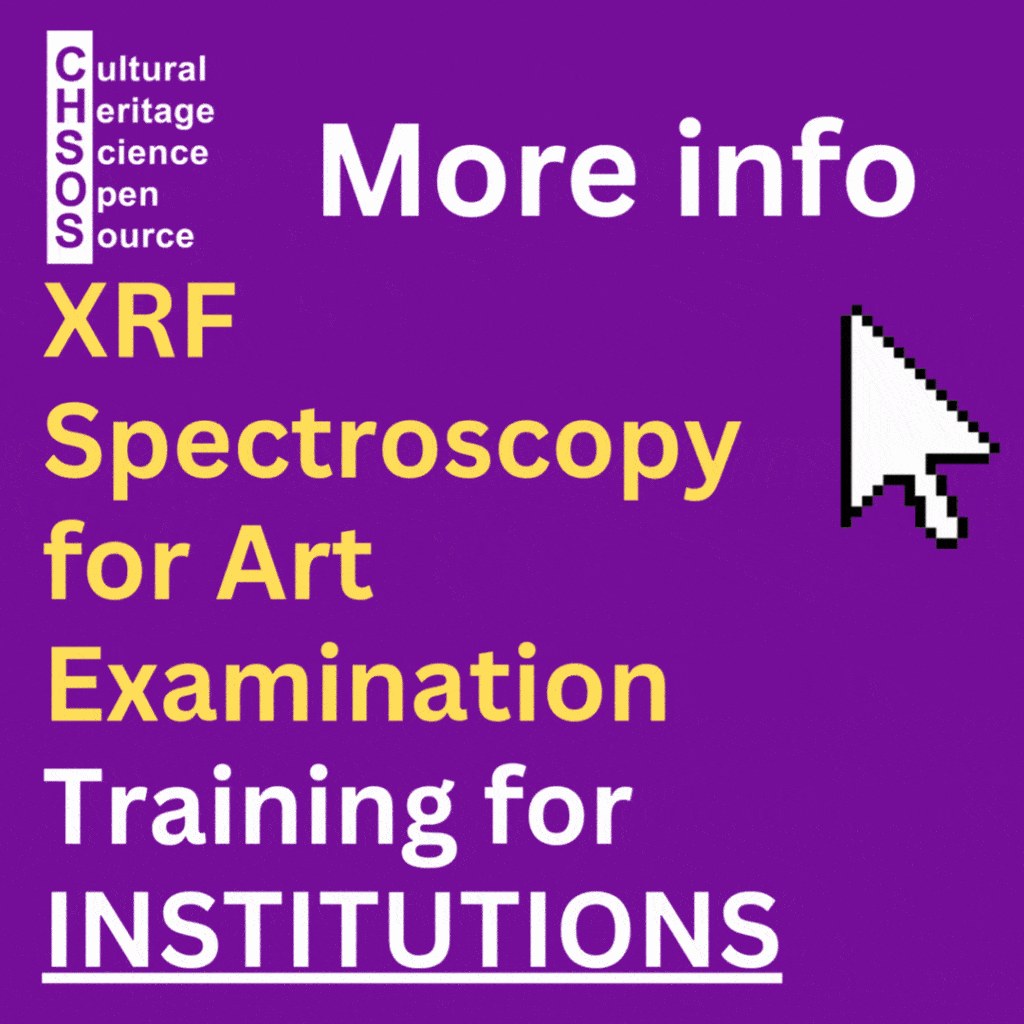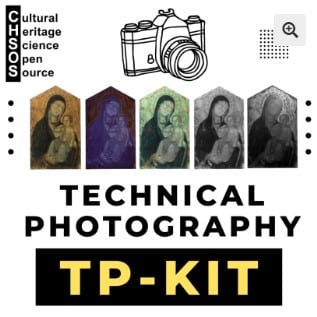Home » About » CHSOS Application Notes » CHSOS Application note #6: Technical Photography of Pigments Checker Modern & Contemporary Art

This note presents the technical photography of modern pigments using the Pigments Checker for Modern & Contemporary Art. We acquired the images with our CHSOS Technical Photography KIT, which covers the UV–VIS–IR spectral range. In this note, we discuss the images and highlight the most important findings.
Technical Photography (TP) refers to a collection of images captured with a modified digital camera sensitive to the spectral range of approximately 360–1000 nm [1–4]. Using different lighting sources and filters, we acquire a selection of technical images, each providing specific information about the object under examination. The CHSOS Technical Photography KIT includes all the tools needed to carry out this imaging workflow.
Pigments Checker “Modern & Contemporary Art”
This collection features the most important pigments used in modern and contemporary art. In contrast, the STANDARD Pigments Checker includes pigments widely used from prehistory to the present and, as a result, contains only a few modern pigments. This new checker focuses exclusively on modern pigments and complements those already included in the standard Pigments Checker.
We applied the colors using an acrylic binder on a cardboard support. We also collected the spectra of each pigment, as well as the binder alone on the cardboard. All spectra are available online on the Pigments Checker webpage.

Technical Photography of Modern pigments
Figure [1] displays the mandatory equipment used for this documentation: the CHSOS Technical Photography KIT. The essential components include the ELIO lamps, Alice lamps, Fabrizio lamps, the Robertina filter set, the TP-MSI card (included in the Pigments Checker), and a modified camera for UV–VIS–IR imaging.
Figure [2] presents the six technical images captured for this analysis. The acronyms are as follows: VIS (visible, standard photo), UVF (ultraviolet fluorescence), UVR (ultraviolet reflected), IR (infrared), IRF–UV, and IRF–VIS (infrared fluorescence, obtained using the UV lamp Fabrizio and the VIS lamp Alice, respectively).

UVF Photography
Most pigments did not reveal a characterizing fluorescence emission but they absorb most of the UV radiation. PR 90 eosin Y is the one, among these modern pigments, that features the strongest fluorescence emission, with a bright orange color, figure [3].

UVR photography
As with the standard Pigments Checker, the most interesting and useful UVR features appear in the white pigments. We photographed both the standard and modern Pigments Checkers together under the same UV irradiation and applied identical post-processing, as shown in Figure [4].
In the standard Pigments Checker, titanium white (rutile) and zinc white—as well as anatase in the modern checker—absorb UV radiation. This property helps identify their presence in paintings, especially since the most common white pigment before the 1920s, lead white, reflects UV and appears bright in UVR images.
Figure [5] displays the reflectance spectra of these white pigments, acquired with the FORS GorgiasUV system [5]. Titanium white shows the highest UV absorption, followed by zinc white, and then anatase. Lead white continues to reflect UV even at wavelengths as short as 350 nm. These characteristics are also clearly visible in the UVR image.



Figure [6] assembles together the white pigments UVR photos. It shows that lead white is the brightest, followed by anatase. Eventually, titanium white (rutile) and zinc white are the darkest.
White modern pigments identification
This information is useful to make a preliminary identification of the white pigments. In particular, it is relevant the different UV absorption exhibited by titanium white (rutile) and anatase.
Titanium white is a general name to indicate a white pigment that is made of one (or a mixture) of the two forms of titanium oxide: anatase and rutile. These crystals have the same chemical formula, TiO2, but different relative positioning of the 3 atoms (they are 2 polymorphs of titanium oxide).
The standard Pigments Checker v.5 has the rutile titanium white. Nowadays titanium white is all made from rutile. But this was not always the case. From about 1920 titanium white was made mostly of anatase because it was more easy to produce. From about 1940 a cheap production method for rutile was established and it replaced anatase, since it was more lightfast and had a stronger hiding power.
The new “modern and contemporary art” pigments checker has the “anatase” titanium white.

Case study: Indian Mughal miniature
We did test the CHSOS Technical Photography KIT on a Indian Mughal miniature painting which was supposed to be from the 18th century, likely 1790, figure [7].
We were interested in evaluating the authenticity of the item and, in particular, its dating [6].
The XRF analysis revealed the white paint is made of titanium. As shown in figure [8], the UVR image of the white paint is bright indicating that this is not a modern rutile titanium white which turns black in the UVR photo, but rather the older version, anatase. This type of titanium white was also confirmed with the Raman Spectroscopy system ElviRA.


We know that anatase was in use from roughly 1920’-1940’. For a manuscript supposedly made in the 18th century, we were expecting lead white pigment, definitely not anatase. Furthermore, the identification of anatase indicates that the object was created not much later than the 1940’, otherwise, we should have found more of the rutile titanium white.
IR Photography
As expected most of these modern pigments are transparent in the infrared. There are just few interesting exceptions. PW 6 – anatase reflects infrared and remains opaque, such as rutile.
All the blues and violets are transparent but manganese blue that absorbs infrared. The other pigments, yellows, orange, reds, and browns, all become transparent.
The only black pigment in this collection, PBk1 – aniline black, absorbs infrared and it is totally opaque, such as the carbon-black pigments in the standard Pigments Checker.
IRF Photography
In the test of the IRF method, both IRF-UV and IRF-VIS did not reveal any pigments showing infrared fluorescence.
Conclusions
The Technical Photography of modern pigments revealed some useful features. In particular, the different behavior in the UVR photo of the titanium oxides and white pigments, anatase, and rutile. Also important was the infrared photo of the modern and common PBk1 – aniline black which behaves as the historical carbon-blacks, absorbing all of the infrared and becoming totally opaque.
Resources
Explore the IRUG Spectral Database
For complementary spectral reference data on modern and historical pigments, visit the Infrared and Raman Users Group (IRUG). IRUG provides a freely accessible library of infrared and Raman spectra submitted by conservation scientists and researchers worldwide. It’s an essential tool for comparing technical photography results with material identification data, especially for synthetic and contemporary pigments used in modern art.






